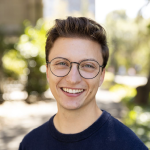From The Atlantic
Why Does AI Art Look Like That?
By Caroline Mimbs Nyce
This week, X launched an AI-image generator, allowing paying subscribers of Elon Musk’s social platform to make their own art. So—naturally—some users appear to have immediately made images of Donald Trump flying a plane toward the World Trade Center; Mickey Mouse wielding an assault rifle, and another of him enjoying a cigarette and some beer on the beach; and so on. Some of the images that people have created using the tool are deeply unsettling; others are just strange, or even kind of funny. They depict wildly different scenarios and characters. But somehow they all kind of look alike, bearing unmistakable hallmarks of AI art that have cropped up in recent years thanks to products such as Midjourney and DALL-E.
Two years into the generative-AI boom, these programs’ creations seem more technically advanced—the Trump image looks better than, say, a similarly distasteful one of SpongeBob SquarePants that Microsoft’s Bing Image Creator generated last October—but they are stuck with a distinct aesthetic. The colors are bright and saturated, the people are beautiful, and the lighting is dramatic. Much of the imagery appears blurred or airbrushed, carefully smoothed like frosting on a wedding cake. At times, the visuals look exaggerated. (And yes, there are frequently errors, such as extra fingers.) A user can get around this algorithmic monotony by using more specific prompts—for example, by typing a picture of a dog riding a horse in the style of Andy Warhol rather than just a picture of a dog riding a horse. But when a person fails to specify, these tools seem to default to an odd blend of cartoon and dreamscape...
Many companies use this technique. “These models are, I think, all technically quite alike,” Isola said, noting that recent tools are based on the transformer model. Perhaps this technology is biased toward a specific look. Take an example from the not-so-distant past: Five years ago, he explained, image generators tended to create really blurry outputs. Researchers realized that it was the result of a mathematical fluke; the models were essentially averaging all the images they were trained on. Averaging, it turns out, “looks like blur.” It’s possible that, today, something similarly technical is happening with this generation of image models that leads them to plop out the same kind of dramatic, highly stylized imagery—but researchers haven’t quite figured it out yet. Additionally, “most models have an ‘aesthetic’ filter on both the input and output that reject images that don't meet a certain aesthetic criteria,” Hany Farid, a professor at the UC Berkeley School of Information, told me over email. “This type of filtering on the input and output is almost certainly a big part of why AI-generated images all have a certain ethereal quality...”
Hany Farid is a professor in the Department of Electrical Engineering & Computer Sciences.










